These past few months of travel have sometimes felt like a tour of wars, both long ago and more recent. It is possible for individuals to learn about history, but do societies ever change?
It is tempting to say ‘yes’, after being part of the cheerful crowd welcoming the Tour de France into Paris, and watching the pleasant socialising at the Paris Plage:
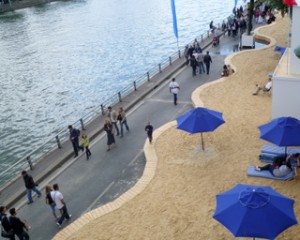
France seems so civilised and comfortable with itself. The countryside is gorgeous, the food is wonderful, the people relaxed. It is possible to distance yourself from the violent stories that unfold in so many of their special places.
There’s the Bayeux Tapestry, a medieval version of a cartoon, some 85 m long, and unrolled on special occasions to remind the population of the noble virtues of their own leader, and to justify his invasion of England. One panel shows a bishop riding into battle with the knights, holding a cudgel but not a sword. Men of god were not allowed to draw blood, but they could give the enemy a good thwack on the head.
On the same day we visited the Normandy beaches, and learned about the complex logistics of the D-day landing. Another justified act of warfare I suppose, but still full of horror and death for both sides.
So many walls on so many hills, so many variations on defense and attack. Today walls are (sometimes) virtual, economic rather than physical.
How chillingly quaint to see the drawings and actual torture accoutrements at the Museum of the Inquisition in Carcassone. Makes you wonder about a species that could devise and implement such procedures. I offer one of the less obvious device from the museum for your imagination:
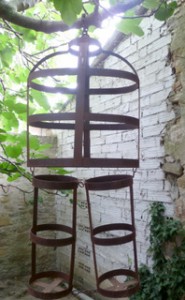
If torture involves inhumane decisions about human well-being, then probably nothing can top Gallipoli, which we visited yesterday. Much more recent, much less abstract, and those stories are still stomach churning after nearly 100 years. We know Gallipoli achieved nothing, but what exactly did the whole first world war achieve, except to lay the seeds for the second?
Berlin was another story on our travels, replete with reminders of the war and its wall. I’ll save those impressions for another time.
Of course there was always a charitable counter to war, like this hospital for the poor established in the middle ages by a rich merchant. Beautifully preserved and lovingly displayed, it also tugs at the heart strings in a more hopeful way:
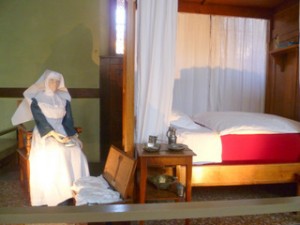
It is also amusing to see that more than one ancient Roman colosseum is now being used for rock concerts and other cultural events, like this one in Nimes:
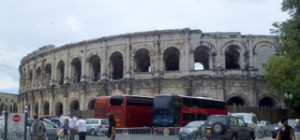
Perhaps there is something to Tom Friedman’s claim that countries that have McDonald’s outlets don’t fight each other. If so, bouquets to them. For the time being, the rich west continues military adventures, but without the monumental impacts earlier generations experienced. Elsewhere progress is not so evident. About 4.5 million have died in the Congo alone in the past decade, but who’s counting?
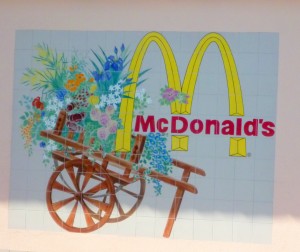
My own belief in non-violence sits apart from my anger over exploitation and distorted economic regimes that allow some to live as princes while others eke out a living. The days of the guillotine are gone and the chateaux on the Loire are just tourist attractions, as are the portraits of their prancing owners:

Similar types still thrive today, not caring that vast masses under their care lead stunted lives while they plunder their nation’s riches. The sword still rules in too many places. Freedom of commerce has to be part of the answer, and punishment for those who attack protesters with troops. Maybe one day they too will see the light.
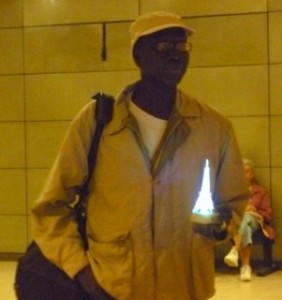
So much of human history dominated by war – and still it goes on! Will we never learn?
Comment by Peter — August 17, 2011 @ 9:16 am